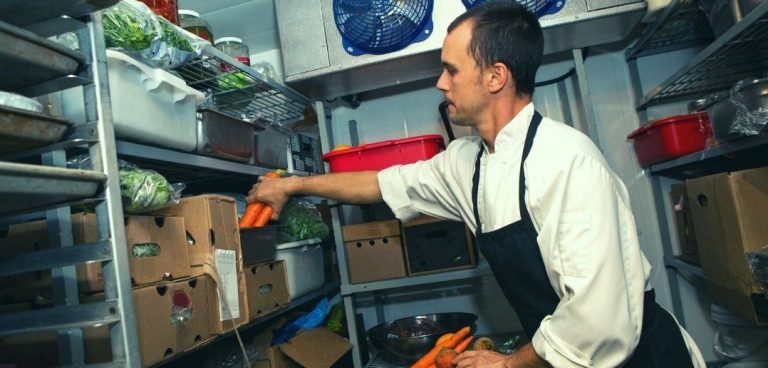A fridge is a vital part of food storage in any commercial kitchen and knowing how to properly store food in a fridge is important for any chef, cook or caterer to know. The fridge ensures that food stays fresh and safe to eat and reduces the spread of bacteria. Ensuring food is stored correctly is ultimately the responsibility of the manager and knowing how to properly store food and maintain your fridge will reduce the spread of foodborne illnesses, protect your customers, cut down on food waste, save you money and ensure you are serving quality food.
This blog article will provide an overview of the best practices for storing food in the fridge, but other resources such as level 3 food hygiene courses are beneficial for food establishment managers and business owners wanting to know more about food storage safety.
Tips on food storage in the fridge
Chilling food in the fridge is a great way to preserve the quality of the food and make it last longer. The main foodstuffs you will be putting in your fridge are ready-to-eat foods, meat, poultry, fish, dairy products, eggs and fruits and vegetables. The majority of food will also have chilling advice on the label on how best to store it and any label that says ‘keep refrigerated’ should be placed in the fridge.
Firstly, fridges should be consistently kept between 1-4C to make sure bacteria cannot multiply and food is kept fresh. You should perform regular temperature checks, making sure the fridge is between 1-4C. If the temperature goes above 5C for more than two hours it is the safest practice to dispose of all the food stored in the fridge.
Make sure you store all food you put in the fridge properly in an organised manner. Place all food items in air-tight containers and clearly label each container with the correct use-by dates and type of food inside. This will help decrease the risk of cross-contamination, prevent food spoiling as quickly and make you aware of food that is coming up to or is past its use-by date. Anything that goes past its use-by date should be disposed of immediately.
It is also important that the food is arranged correctly. All ready-to-eat foods, dairy products, packaged products and soups should be kept on the top and middle shelves. Most fridges have specialised drawers for fruits and vegetables designed to keep them fresher for longer, however, fridges that don’t have this drawer should be stored on the top and middle shelves in airtight containers.
All meat, poultry and fish products should be individually wrapped and covered and stored on the lowest shelf in the fridge. This helps reduce the chance of meat juices dripping down and contaminating other foodstuffs. Raw meat and cooked meat should also always be separated.
It is also important to be aware of how not to store food in your fridge. You should not put anything in the fridge that is already spoiled or past its use-by date. If you have any doubts over the quality of the food, dispose of it and don’t put it in the fridge. You should also avoid putting perishable foods and dairy products in the doors of the fridge. These spaces are not as consistently chilled as the shelves in the middle of the fridge, meaning that food stored there is more likely to go off.
Best fridge practices
Ensuring you are serving your customers with safe and the best quality food possible should be every kitchen’s number one priority. There are multiple things you should do when storing food in your fridges to reduce bacteria and ensure the quality of your food.
Here’s a list of our best practices for fridge management…
- Hot food needs to be cooled and stored in the fridge within two hours. Placing hot food in the fridge will raise its internal temperature and cause condensation, spoiling some foods quicker.
- Don’t store food in the fridge that has been at room temperature for more than two hours. After two hours, bacteria can rapidly grow on the food and it should be disposed of.
- Don’t overstock the fridge – Overstocking the fridge prevents chilled air from being circulated around the fridge.
- Place new stock behind old stock – When putting new stock in the fridge, place the items with an older use-by date to the back. This ensures stock closer to its use by date gets used first and reduces food waste.
- Organise your stock once a week. Dispose of any food items past their use-by date.
- If before the use-by date but the food seems spoiled, smells off or looks discoloured, dispose of it.
